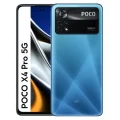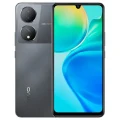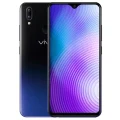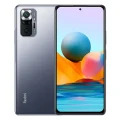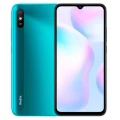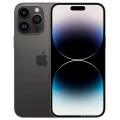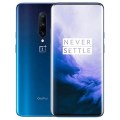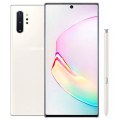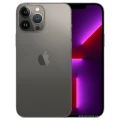- Awesome page
- Latest Mobile
- Smartphones
- Google Pixel 5
Google Pixel 5
Google Pixel 5 Price in Bangladesh,
The Google Pixel 5 is a mid-range smartphone priced around BDT 70,000 in Bangladesh. It offers a high-quality display, a capable camera system with advanced computational photography features, and fast charging capabilities. It’s a popular choice among users who prioritize value for money and Google’s software integration.
Specifications
General
| Model | Google Pixel 5 |
| Announced | 2020, September 30 |
| Released | 2020, October 15 |
| Status | Available |
| Unofficial price | 8GB 128GB ৳70,000 |
Design
| Dimensions | 144.7 x 70.4 x 8 mm (5.70 x 2.77 x 0.31 in) |
| Weight | 151 g (5.33 oz) |
| Colors |
Just Black, Sorta sage |
Network
| Technology | GSM / CDMA / HSPA / EVDO / LTE / 5G |
| 2G Network |
GSM 850 / 900 / 1800 / 1900 CDMA 800 / 1700 / 1900 |
| 3G Network |
HSDPA 850 / 900 / 1700(AWS) / 1900 / 2100 CDMA2000 1xEV-DO |
| 4G Network | 1, 2, 3, 4, 5, 7, 8, 12, 13, 14, 17, 18, 19, 20, 25, 26, 28, 29, 30, 32, 38, 39, 40, 41, 42, 46, 48, 66, 71 |
| 5G Network |
1, 2, 3, 5, 7, 8, 12, 28, 41, 66, 71, 77, 78, 258, 260, 261 Sub6/mmWave - GD1YQ 1, 2, 3, 5, 7, 8, 12, 28, 41, 66, 71, 77, 78 Sub6 - GTT9Q |
| GPRS <strong>GPRS</strong> (General Packet Radio Service) is a packet oriented mobile data service on the 2G and 3G cellular communication system's global system for mobile communications (GSM), Generally, GPRS is used for the purpose of wireless data transfer, such as sharing pictures and videos or browsing the Internet via a mobile phone connection. | |
| EDGE <strong>EDGE</strong> (Enhanced Data GSM Environment) is a wireless network technology generally considered the next step in the 2G network offers data transfer rates up to four times faster than ordinary GSM networks, Generally, EDGE is used for the purpose of wireless data transfer, such as sharing pictures and videos or browsing the Internet via a mobile phone connection. | |
| Speed | HSPA 42.2/5.76 Mbps, LTE-A (CA), 5G |
Display
| Display Type <strong>Display Technology => </strong> A number of display technologies and types used in mobile phones => TFT (Thin Film Transistor), IPS (In-Place Switching), OLED (Organic Light Emitting Diode), AMOLED (Active-Matrix Organic Light-Emitting Diode), Super AMOLED (an even advanced version of AMOLED), Resistive Touchscreen (Resistive touchscreens contain two layer of conductive material with a very small gap between them which acts as a resistance), Capacitive Touchsceen (Capacitive touchscreen technology consists of a layer of glass coated with a transparent conductor) | OLED capacitive touchscreen, 16M colors |
| Size | 6.0 inches, 87.6 cm2 (~85.9% screen-to-body ratio) |
| Resolution | 1080 x 2340 pixels, 19.5:9 ratio (~432 ppi density) |
| Features |
Corning Gorilla Glass 6 Always-on display HDR10+ 90Hz refresh rate |
Camera
Main camera
| Camera Setup | Dual |
| Primary <strong>Camera</strong> is able to capture photographs and usually videos, The most important characteristics of a camera are the resolution (measured in megapixels), lens focus type (fixed or automatic), higher megapixel cameras are known to capture higher quality photos, but not always a good measurement of the photos quality. |
12.2 MP, f/1.7, 27mm (wide), 1/2.55&amp;quot;, 1.4µm, dual pixel PDAF, OIS 16 MP, f/2.2, 107˚ (ultrawide), 1.0µm |
| Features |
LED flash, Auto-HDR, panorama |
| Video | 4K@30/60fps, 1080p@30/60/120/240fps; gyro-EIS |
Selfie camera
| Camera Setup | Single |
| Primary <strong>Camera</strong> is able to capture photographs and usually videos, The most important characteristics of a camera are the resolution (measured in megapixels), lens focus type (fixed or automatic), higher megapixel cameras are known to capture higher quality photos, but not always a good measurement of the photos quality. |
8 MP, f/2.0, 24mm (wide), 1/4.0&amp;quot;, 1.12µm |
| Features |
Auto-HD |
| Video | 1080p@30fps |
Hardware
| Chipset <strong>Chipset</strong> is a group of integrated circuits designed to perform one or a more dedicated functions, often with real time computing constraints, Popular smartphones are equipped with more advanced embedded chipsets that can do many different tasks depending on their programming. | Qualcomm SDM765 Snapdragon 765G (7 nm) |
| CPU <strong>CPU</strong> (Central Processing Unit) mostly known as processors, CPU processes instructions in order to carry out certain functions that make your device operate properly. Processors are often described as the brain of computers, smartphones and tablets, Smartphones and tablets rely on processors to carry out their every task, Processors are an incredibly important factor in selecting any type of computing device, including your smartphone. | Octa-core (1x2.4 GHz Kryo 475 Prime & 1x2.2 GHz Kryo 475 Gold & 6x1.8 GHz Kryo 475 Silver) |
| GPU <strong>GPU</strong> (Graphics Processing Unit) is a single-chip processor designed to rapidly manipulate and alter memory to accelerate the creation of images in a frame buffer intended for output to a display, This includes things such as lighting effects, object transformations, and 3D motion. | Adreno 620 |
| RAM (Memory) <strong>RAM</strong> (Random Access Memory) is a type of computer memory that can be accessed randomly, any byte of memory can be accessed without touching the preceding bytes that allows information to be stored and accessed quickly from random locations. RAM is the most common type of memory found in computer systems, smartphones, tablets and other electronic devices. | 128 GB UFS 2.1 |
| Internal Storage <strong>Internal Storage</strong> is a data storage space (flash memory) mostly used in smartphones, tablets and other electronic devices where operating system, apps, music, photos, videos, files and other user data Is stored. | 8 GB |
| Sensors <strong>Sensors</strong> are electronic components that detects and responds to some type of input from the physical environment. The specific input could be light, heat, motion, moisture, pressure and location, The output is generally a signal that is converted to use in computing systems, a location sensor, such as a GPS receiver is able to detect current location of your electronic device. |
Fingerprint (rear-mounted), accelerometer, gyro, proximity, compass, barometer |
Connectivity
| Bluetooth <strong>Bluetooth</strong> is a wireless communications technology for exchanging data between mobile phones, headsets, computers and other network devices over short distances without wires, Bluetooth technology was primarily designed to support simple wireless networking of personal consumer devices. | 5.0, A2DP, LE, aptX HD |
| Infrared <strong>Infrared</strong> connectivity is an old wireless technology used to connect two electronic devices. It uses a beam of infrared light to transmit information and so requires direct line of sight and operates only at close range. | |
| USB | USB Type-C 3.1 |
| GPS <strong>GPS</strong> The Global Positioning System is a satellite-based radio navigation system, GPS permits users to determine their position, velocity and the time 24 hours a day, in all weather, anywhere in the world, In order to locate your position, your device or GPS receiver must have a clear view of the sky. | Yes, with A-GPS, GLONASS, GALILEO, QZSS |
| NFC <strong>NFC</strong> (Near field communication) is a set of standards for smartphones and similar devices to establish peer-to-peer radio communications with each other by touching them together or bringing them into proximity, usually no more than a few inches. |
Battery
| Battery Type <strong>Battery Type => </strong> Cell phones run on various kinds of batteries depending on the manufacturer, phone size or shape and features. There are basically four types of cell phone batteries => Lithium Polymer, Lithium Ion, Nickel Metal Hydride and Nickel Cadmium. | Non-Removable Li-Po |
| Capacity <strong>Battery Capacity</strong> is a measure (typically in Amp-hr) of the charge stored by the battery, and is determined by the mass of active material contained in the battery. The battery capacity represents the maximum amount of energy that can be extracted from the battery under certain conditions. | 4080mAh Li-Po |
| Charging Charging | Fast charging 18W Reverse charging Wireless charging USB Power Delivery 2.0 |
Google Pixel 5 The Smartphone Balancing Act
In a world crowded with smartphones vying for attention, the Google Pixel 5 emerges as a breath of fresh air. It marks a notable shift in Google’s strategy from pushing high-end specs to focusing on user experience and practicality. Whether you’re a tech enthusiast, a loyal Google fan, or an everyday smartphone user, the Pixel 5’s features promise to appeal to a broad audience.
Design and Build Quality
The Google Pixel 5 makes a statement with its design. It steps away from the usual glass back and opts for an aluminum body coated in bio-resin. This choice gives the phone a premium feel while ensuring durability. The build quality is robust, yet it’s surprisingly lightweight, making it comfortable to hold for extended periods.
The phone’s minimalist design speaks volumes. The lack of unnecessary embellishments results in a clean, sleek appearance. With a 6-inch display and thin bezels, the Pixel 5 strikes the right balance between screen real estate and pocket-friendly dimensions. For users who appreciate understated elegance, this phone checks all the boxes.
Ergonomically, the Pixel 5 is a joy to use. The rounded edges fit naturally in hand, and the physical buttons are conveniently placed. It’s a phone designed for daily hustle, where form meets function seamlessly.
Display and Audio Performance
The Pixel 5 boasts an impressive 6-inch OLED display with a resolution of 2340 x 1080 pixels. This ensures that images are crisp, colors are vibrant, and blacks are deep. Whether you’re watching videos or scrolling through photos, the display offers an immersive experience that captures every detail.
Brightness levels on the Pixel 5 are exceptional. Even under direct sunlight, the screen remains legible, which is a boon for outdoor use. The color accuracy is equally commendable, making it a suitable companion for media consumption and creative tasks where precision matters.
Audio performance complements the visual experience. The Pixel 5 features stereo speakers that deliver clear sound. While it may not boast the deepest bass, the audio quality is consistent and satisfying, whether you’re on a call or streaming your favorite playlist. For those who value a balanced multimedia package, the Pixel 5 delivers.
Camera Capabilities
Google’s Pixel phones have always been renowned for their exceptional cameras, and the Pixel 5 continues this tradition. The dual-camera setup includes a 12.2 MP main sensor and a 16 MP ultra-wide lens. This combination makes the Pixel 5 versatile enough to capture everything from portraits to sprawling landscapes.
Image quality is where the Pixel 5 shines. Photos are sharp, and the color reproduction is natural. Google’s computational photography magic works wonders in low-light conditions, producing bright images with minimal noise. The Night Sight mode is particularly impressive, capturing details that remain elusive to many competitors.
Video capabilities are equally noteworthy. The Pixel 5 can record 4K video at 60fps, ensuring smooth footage in various lighting situations. Features like image stabilization and cinematic pan add a professional touch to your videos, making it a great tool for budding content creators.
Performance and Battery Life
Under the hood, the Pixel 5 is powered by the Snapdragon 765G processor, paired with 8GB of RAM. While it may not be the most powerful chip on the market, it handles day-to-day tasks with ease. Multitasking is smooth, and app launches are snappy, catering to users who prioritize efficiency over raw power.
Gaming performance is respectable, too. The Pixel 5 runs popular titles without hiccups, although hardcore gamers seeking the highest frame rates might find it lacking. But for most users, the performance is more than adequate, reflecting Google’s decision to focus on practical benefits rather than chasing specs.
Battery life is a standout feature of the Pixel 5. With a 4,080 mAh battery, it comfortably lasts a full day of moderate to heavy use. Fast charging and wireless charging options add convenience, ensuring you’re never tethered to a power outlet for long.
Software and User Experience
Running on Android 11, the Pixel 5 offers a clean and intuitive user interface. The absence of bloatware enhances the experience, allowing users to enjoy Android in its purest form. Google’s commitment to regular updates means the Pixel 5 stays up-to-date with the latest features and security patches.
The Pixel 5 introduces useful features like Hold for Me and Extreme Battery Saver, which reflect Google’s focus on enhancing everyday experiences. The seamless integration of Google services further enriches usability, making it easy to manage tasks, communicate, and stay organized.
For tech enthusiasts who appreciate software refinement, the Pixel 5 delivers an experience that feels polished and thoughtfully curated. It’s a phone that adapts to your needs, providing tools that simplify life rather than complicate it.
Price and Value Proposition
Priced around $699 at launch, the Google Pixel 5 positions itself as a premium mid-range device. While some may balk at the absence of flagship specs, the phone’s value lies in its holistic approach to user satisfaction. It’s about offering a balanced experience that caters to what truly matters to users.
The Pixel 5’s price tag reflects the quality of its features, from the stellar camera to the enduring battery life. It’s a device that delivers solid performance across the board, without the bloat that often accompanies more expensive alternatives. The value proposition is clear for those seeking a dependable smartphone.
For smartphone users who prioritize experience over extravagance, the Pixel 5 represents a wise investment. It’s a testament to Google’s ability to craft a device that puts user needs first, offering genuine value in a saturated market.
Comparison with Previous Models and Competitors
Compared to its predecessor, the Pixel 4, the Pixel 5 offers several improvements. The design is more refined, with better ergonomics and a longer-lasting battery. The inclusion of 5G connectivity marks a step forward, aligning the Pixel 5 with modern connectivity standards.
When pitted against competitors like the Samsung Galaxy S20 FE and the iPhone SE, the Pixel 5 holds its ground. While it may not boast the highest specs, it excels in areas that matter, such as camera quality and software experience. It’s a phone for those who appreciate Google’s ecosystem and seek seamless integration.
Ultimately, the Pixel 5 stands out by focusing on what’s essential. It may lack certain frills, but it compensates with features that enhance daily life, making it a worthy contender in the smartphone arena.
Conclusion
The Google Pixel 5 is a testament to Google’s ability to combine innovation with practicality. It’s a smartphone that doesn’t just chase specs but delivers a meaningful user experience. From its elegant design to its remarkable camera capabilities, the Pixel 5 is a device that caters to a wide range of users.
For tech enthusiasts and everyday users alike, the Pixel 5 offers a balanced blend of performance, style, and functionality. It represents a shift towards a more thoughtful approach to smartphone design, one that prioritizes user satisfaction over all else.
If you’re in the market for a smartphone that delivers on all fronts, consider the Google Pixel 5. Its charm lies in its ability to make life simpler and more enjoyable. Don’t just take our word for it—experience the Pixel 5’s magic for yourself.



























































































